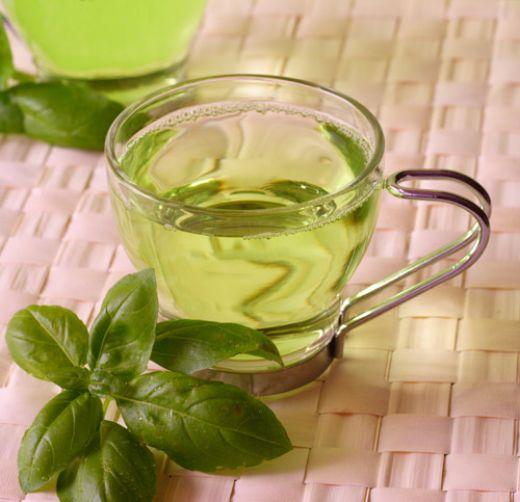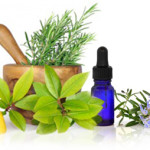The Antidiabetic Properties of Oregano, Marjoram and Rosemary
Aromatic herbs are known and used mostly for their culinary attributes. But there is more to them than this. In a recent scientific study, researchers have demonstrated that some substances contained in oregano, marjoram and rosemary have the ability to inhibit certain enzymes that are directly involved in the developing of type II diabetes.

Oregano tea
Contents
Pathology of type II diabetes
Type II diabetes begins with what is called insulin resistance (cells failing to respond to insulin, due to the inactivation of insulin receptors) and continues with an overproduction of insulin (because of a feed-back mechanism that follows primarily the absence of insulin activity and not the raising of insulin blood levels) which culminates with the exhaustion of the beta cells found in the islets of Langerhans in the pancreas. Protein-tyrosine phosphatase 1B (PTP1B) is an enzyme that can dephosphorylate the phosphotyrosine residues of the activated insulin receptor kinase and thus inactivate this receptor. That is why the inhibition of PTP1B is one way of treating type II diabetes.
Another way of treating type II diabetes, provided that the pancreatic beta cells are not exhausted yet, is to inhibit dipeptidyl peptidase-4 (DPP4), an enzyme responsible for the degradation of incretins (gastrointestinal hormones that increase the amount of insulin released after eating and reduce gastric emptying, thus slowing the rate of absorption of nutrients into the blood stream and at the same time reducing food intake).
The main scientific study
In a study published in Journal of Agricultural and Food Chemistry in 2014, researchers tried to examine the ability to inhibit DPP4 and PTP1B among extracts from greenhouse-grown or commercially purchased Greek oregano (Origanum vulgare), marjoram (Origanum majorana), rosemary (Rosmarinus officinalis), and Mexican oregano (Lippia graveolens). Greenhouse rosemary, Mexican oregano, and marjoram extracts were proved to be the best inhibitors of DPP-IV, while commercial rosemary, Mexican oregano, and marjoram were the best inhibitors of PTP1B.
Other scientific studies
A study published in Bioorganic and Medicinal Chemistry in 2006 showed that four constituents of Origanum vulgare have “the ability to inhibit aldose reductase (ALR2), the first enzyme of the polyol pathway implicated in the secondary complications of diabetes.”
A study published in Journal of Ethnopharmacology in 2004 concluded that “an aqueous extract of Origanum vulgare exhibits an anti-hyperglycaemic activity in streptozotocin-diabetic rats without affecting basal plasma insulin concentrations.”
A study published in Evidence-based Alternative and Complementary Medicine in 2012 examined the therapeutic potential of an extract of Origanum majorana on certain parameters of streptozotocin-induced diabetes in mice (increase in tail tendon collagen, glycated collagen linked fluorescence and reduction in pepsin digestion). The results showed that “treatment with Origanum majorana improved these parameters when compared to diabetic control and glibenclamide.”
A study published in Journal of Physiology and Biochemistry in 2013 examined the hypoglycemic and hepatoprotective activity of Rosmarinus officinalis extract in diabetic rats. The results revealed that “the extract exhibits the protective effect on tissues and prove its potentials as an antidiabetic agent.”



